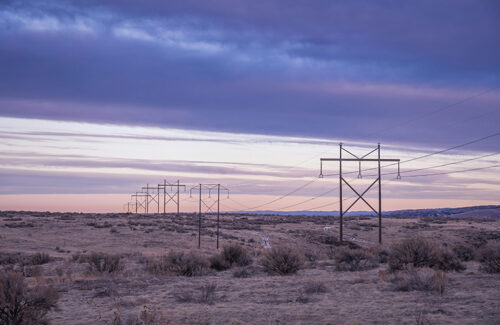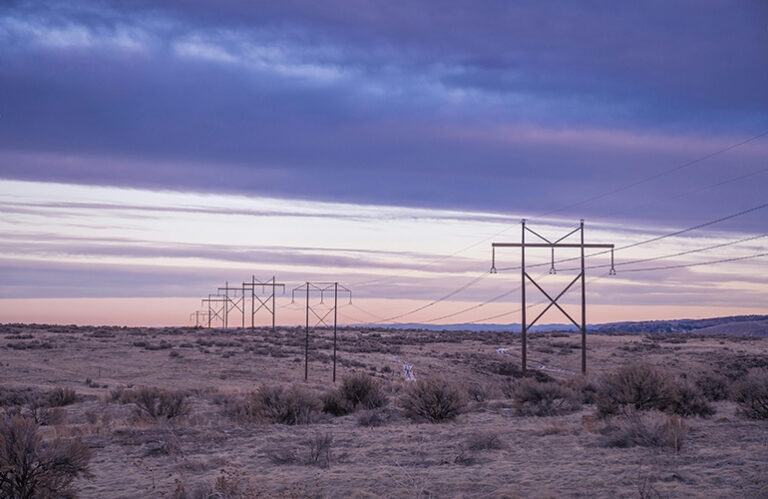 Permitting and transmission for utility solar projects has been a challenge for the industry that has only grown as installations grow in size. But a new bipartisan bill in its early stages in the Senate is giving large-scale solar developers hope for a less crowded future.
Permitting and transmission for utility solar projects has been a challenge for the industry that has only grown as installations grow in size. But a new bipartisan bill in its early stages in the Senate is giving large-scale solar developers hope for a less crowded future.
The Energy Permit Reform Act of 2024 (EPRA), introduced by Sens. Joe Manchin (I-WV) and John Barrasso (R-WY), aims to remove roadblocks to efficient permitting and transmission of all types of energy projects, including renewables.
Solar developers and other industry leaders have been pushing for these types of changes in recent years. Recently, nearly 200 companies, including AES and EDF Renewables, sent a letter to Congress asking them to focus on this issue.
“Building a new transmission in this country takes many years, about 15 years or more, to do all the NEPA (National Environmental Policy Act) studies, work through communities, etc. What we currently have is a power grid that, some say, is archaic and in need of massive upgrades,” said Amanda Smith, VP of external affairs at AES.
In its current form, EPRA would speed judicial review processes by shortening or adding deadlines, streamlining and increasing the deployment of renewable energy on federal lands, and helping move electricity between regions by giving states more power over transmission planning .
“There are two main things we need: we need to be able to build our own generation projects. We also need a transmission built to connect our projects to the load,” said Virinder Singh, VP of regulatory and legislative affairs at developer EDF Renewables. “We’ve been most focused on the federal land. That is a hugely important issue for the western US, for California and all states that want to maintain reliability and reduce greenhouse gas emissions.”
EPRA doubles the target for renewable energy deployment on federal lands from 25 to 50 GW (but without a deadline) and adds energy storage to the target. It also streamlines environmental assessments for renewable energy projects with little disruption.
Singh said more work needs to be done on the federal land portion to suit industry needs, but that the transmission portion is favorable as written. The bill encourages interregional cooperation and establishes cost allocation plans for those paying for transmission buildout: regional transmission organizations, specific states, or utilities.
“There’s always a lot of persistent bickering between all these jurisdictions over who covers what, so things don’t get built because there’s no clear path on how the costs are going to be recovered,” Singh said. “That has to be resolved. You can imagine trying to build an interstate highway system that is also connected to state-specific farm-to-market roads. Everyone benefits from all those things in all states, but people negotiate the exact cost distribution of them, and that’s why nothing gets built.
EPRA requires adjacent transmission planning regions to jointly prepare transmission construction plans. It also defines the ways in which costs should be allocated based on factors such as improved reliability, reduced congestion and greater energy independence.
These changes in transmission planning could increase the ability to move clean energy from areas with high solar capacity but low demand to places with less capacity and high demand.
“The more transmission you have, the more ability you have to move electrons from one place to another and attract different sources of generation, the more resilient and reliable your electric grid is,” said Jeremy Horan, vice president of government affairs at the non- profit organization American Council on Renewable. Energy (ACORE). “Everything from keeping your food cold 24/7, to keeping hospitals running, to keeping military bases online – all those things we need to keep those electrons flowing, and transmission, especially inter-regional transmission, will be critical.”
EPRA streamlines the assessment process to determine where transfers are needed and sets deadlines for the legal assessment of energy projects, a part of the process that often adds years to projects.
“Setting hard timelines is a theme in the bill, whether it’s transmission or renewable energy on federal lands or even fossil infrastructure,” Singh said.
The EPRA is of course not exclusive to renewable energy; it is a bipartisan bill, after all. It also aims to make it easier to expand fossil fuel and mining operations on public lands. While groups like the Center for Biological Diversity have spoken out against the bill because of these provisions, renewable energy policy experts say they are a necessary evil to pass a transmission bill in the current political climate. approve.
“The political reality is not favorable to a single resource licensing bill – I think the same goes for fossil fuels. You don’t get a permit for just fossil fuels,” Singh said.
The bill is still at a very early stage. It was passed by the Senate Energy and Natural Resources Committee in July and has since stalled, likely until after the election. But Singh believes the lame-duck session can be helpful for exercise.
“If you see changes in party control of the two different houses, that can actually spark interest in getting something done. So the party that loses power, say in the House of Representatives, may want to put its stamp on a federal statute before relinquishing that power. The same goes for the Senate side,” he said.
Time will tell if this will be the bill to make the permitting and transmission changes needed to meet renewable energy demand across the country.
“It’s common, especially in federal legislative efforts, where there’s a lot of work going on and you don’t know if it’s going to happen or not, but if it’s going to happen, it could happen very quickly,” Singh said. ‘It’s better to have everything in order. You have to do the preparatory work to take advantage of the right opportunities politically.”
Even if it doesn’t pass, it’s the start of an important next step for the solar and storage industry on Capitol Hill.
“Will this affect AES’s business, or anyone else’s for that matter, over the next two years? If it were passed today, probably not. But it sets the right path, the right policies for reforming the system we all rely on for the energy transition,” Smith said.


